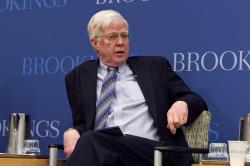One justification for proposals to increase funding within public or private pension systems is that such a policy will produce an equivalent increase in national saving, reducing the burden placed on the future workers who must support the retired elderly. This paper examines several sources of empirical evidence to determine whether this justification for advanced funding is valid. We estimate the impact of increased pension funding on national saving, both in public budgets and in the private sector.
The first kind of evidence comes from the experience of U.S. state governments in managing their employee pension funds. The behavior of state governments is relevant to the question of whether it is possible to fund a pension system within the public sector. Our results show a high degree of separation between asset accumulation in state employee pension funds and the operations of states’ non-pension operating budgets. States that accumulate exceptionally large reserves within their pension funds do not act as though the funds are available to finance non-pension government operations or to provide short-term relief to state taxpayers.
On the other hand, an examination of the experience of national-level governments that have attempted to pre-fund a portion of their public pension liabilities shows a very different budgetary response to pension fund accumulation. A large proportion (60 –100 percent) of the fund accumulation in national social insurance systems is offset within the government sector by larger deficits in other budgetary accounts.
We argue that the contrasting results for U.S. states and OECD nation states can be traced to differences in the governance of the pension systems and the degree of effort that is made to separate the pension funding from other budget activities. More fundamentally, differences in legislator behavior at the sub-national and national level may be explained by state competition for low-cost credit and differences in the mobility of taxpayers in the two kinds of jurisdictions. The budgetary decisions of national governments are further complicated by efforts to use fiscal policy as a tool of economic stabilization.
We also examined saving responses within the private sector to fluctuations in private insurance and pension fund accumulation. This requires the construction of measures of private saving that distinguish between the flow of funds into formal retirement accounts and other saving. We found substantial evidence that pension saving substitutes for other forms of private saving. While the experience with voluntary private pension programs is not identical to the situation that would arise under a system of mandatory pension accounts, it does indicate that the potential for asset substitution is a significant problem that would limit the impact of pension funding on aggregate private saving.



